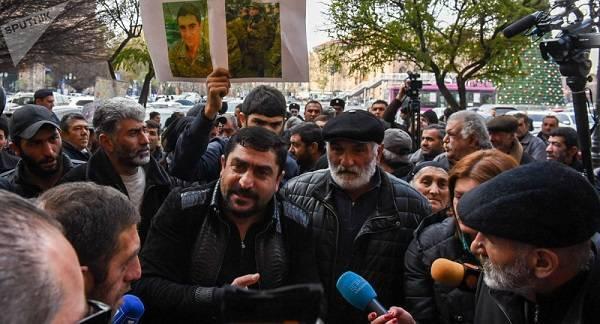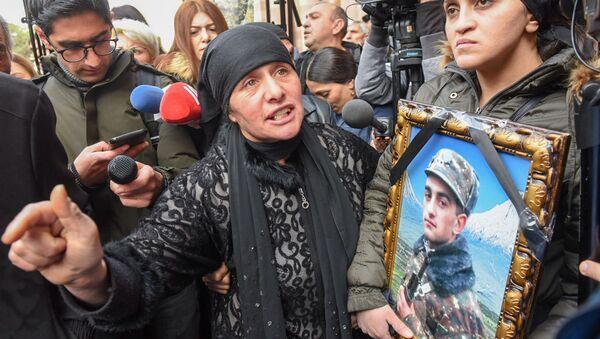Yerevan's cynical attempt to whitewash ethnic cleansing Bill "On National Minorities"
Curious news has come from Armenia. A working discussion of the draft law "On National Minorities" was held in Yerevan under the chairmanship of the Deputy Minister of Justice Karen Karapetyan and the Deputy Chairman of the National Assembly Standing Committee on Human Rights Protection and Public Affairs Rustam Bakoyan.
According to Armenian media, the bill is aimed at consolidating legislative guarantees to implement the rights of national minorities. At the same time, during the discussion, consultants from the Directorate General of the Council of Europe for Democracy and Human Dignity presented a joint opinion of the Venice Commission and the Directorate General of the Council of Europe on the bill. Also, they answered questions regarding the solution to the problems recorded in the presented opinion.
One does not need to be a very great expert on Armenia to realise that this legislative initiative is nothing but a sham and eyewash designed to obscure once again the fact of the purely mono-ethnic nature of the Armenian state. After all, the number of representatives of the peoples loudly referred to in Yerevan as national minorities is so minuscule as to be almost zero.
As of 2021, Armenia had a population of 35,308 Yazidis, 11,911 Russians, 2,769 Assyrians, and 2,162 Kurds. This means that out of a population of just under 3 million people, there are just over 50,000 representatives of national minorities, which is about one and a half per cent of the population.

However, even despite such a small number of national minorities in Armenia, which in no way and in no way threaten the dominant position of the Armenian ethnos, they have nevertheless faced manifestations of hatred on the part of Armenians for many years. The Yezidis, who are often portrayed negatively in Armenian society, are the worst offenders. They also have a hard time in the Armenian army, where they become objects of harassment and bullying. The murder of Yezidi soldier Artur Adjamyan and the bullying of Yurik Broyan caused a resonance. What can we say about the intolerance of Armenians towards Azerbaijanis, who historically made up the majority of the population of the territory of modern Armenia?

Soviet Armenia was created as a prototype of an ethnically homogeneous Armenian state. Even earlier, before the establishment of the Armenian SSR, Armenian populations were continually resettled from the Ottoman Empire and the Qajar state onto the lands of the former Erivan Khanate. The sole ethnic group standing in the way of realising the Armenian dream was the Azerbaijanis, who constituted the majority of the region's population.
Through a deliberate policy of Armenianisation carried out both in the Russian Empire and the USSR, Azerbaijanis were gradually displaced from their historical living areas. The final, tragic acts of this cleansing occurred in the late 1940s when several tens of thousands of Azerbaijanis were resettled to the Azerbaijan SSR, and in the late 1980s, when fanatical nationalist Armenian mobs expelled the last 250,000 Azerbaijanis from the Armenian SSR.
If Yerevan were to undertake to return and provide equal rights to those 250,000 Azerbaijanis, then it would be possible to talk about the relevance of the law on national minorities. Otherwise, all this fuss with the law on national minorities is just an aim of creating a deceptive appearance of a multi-ethnic Armenian state. And European structures are playing along with Yerevan in this farce in every possible way. There is a blatant manifestation of double standards here. It is precisely from the rights of the hundreds of thousands of expelled Azerbaijanis that any discussion of the rights of national minorities in Armenia should begin.
It is with the rights of the hundreds of thousands of Azerbaijanis who have been expelled that any conversation about the rights of national minorities in Armenia should begin. However, Western structures not only do not do this but also dare to raise the issue of the Karabakh Armenians allegedly expelled from Azerbaijan. By the way, a curious detail: the European Commission for Democracy through Law, better known by the name of the city where it meets as the Venice Commission, was established by the 18 member states of the Council of Europe shortly after the fall of the Berlin Wall in 1990. The Commission played a key role in the adoption by Eastern European countries of constitutions that met the standards of the European constitutional heritage.
It would be nice if this commission would take up its original responsibilities and force Armenia to carry out a constitutional reform that would put an end to its legislated territorial claims to Azerbaijan. It is with this step that Armenia's long road to recovery should begin, which will inevitably lead to a real improvement in the situation not only of the rare representatives of national minorities, but also of Armenians themselves.








